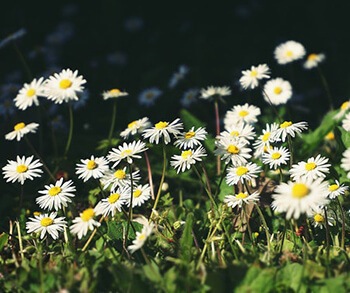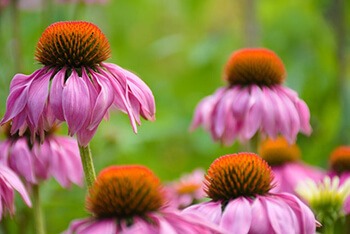No matter what your life goals are, taking care of your health should always be at the top of your priority list. It’s essential to actively do your best to look after your physical and mental wellbeing to live a prosperous, long life. Not only will that have you save up on hefty medical bills, but also improve your day-to-day performance and productivity. How we choose to treat our body and mind can directly affect our life expectancy, while also decreasing our chances of developing serious illnesses as we age.
Sadly, many people take their health lightly and choose not to invest in it, seeing it as a financial drain. Sure—regular check-ups, doctors visits and prescriptions medications can cost you a considerable amount of money, with even herbal supplements skyrocketing in price lately, but that doesn’t make it okay to stop looking after yourself. A way to keep the costs low and stay healthy is to take on home-grown natural remedies.

Most of us don’t put much thought into where our health supplements come from. The majority of herbal ingredients grow out of the ground, hence why supplements are often considered “natural”. With just a bit of effort and patience, you can start growing your own health herbs in your backyard. There are huge advantages of this, including that you get to take them in their rawest and most natural form to help prevent or treat a wide variety of health issues.
In this article, we’ll take a look at the top 11 plants you should start growing immediately for an unlimited supply of natural remedial wonders.
Top 11 Plants You Need to Start Growing Today
1. Dandelions
If you see dandelions as weeds that belong in your garden, that mindset needs to change. Dandelions have remarkable health benefits. According to some studies, they’re useful in combatting certain cases of chemo-resistant cancer. Dandelion leaves have diuretic properties, containing a variety of minerals and vitamins, along with potassium. Dandelion root can also be used as a gentle liver tonic. As a natural pain remedy, dandelions can also be used to create balms for external use on the skin, thanks to their mild analgesic properties.

If you’ve ever de-weeded before, you’ll know that dandelions are typically harder to manage than they are to grow in your garden. Chances are, they already exist unsolicited in your lawn, so you may not even have to visit a nursery or spend any money on them. In almost all weather and soil conditions, they grow as weeds. However, they grow the most during the summer and spring months.
2. Violets
Though they’re known widely for their good looks, violets have much more to them than their attractive appearance. Experts think they can help with the treatment of many skin conditions, including rashes, hives, and cradle cap. To treat dry skin problems or eczema, violets can simply be infused with oil and applied externally.
Miraculously, voilets even been used to aid the treatment of some forms of cancer. However, ingesting too much of this plant in a single sitting can have a laxative effect, so beware.
While some people see them as common weeds, violets can be a valuable addition to your garden when grown in a controlled setting — not to mention, they’ll lift your garden’s look too! It’s best to grow your violets in damp, cool locations in moist soil. They aren’t high maintenance, and won’t need too much of your time or attention to grow properly.
3. Roses

Rose extract is a very common ingredient in skincare products, and for good reason. Along with a distinctly pleasing scent that’s exclusive to roses, the flower possesses incredible skin healthcare potential. Its leaves can help treat itchiness, insect bites, and redness. Most of the rose’s benefits comes from its anti-inflammatory properties, which help reduce irritation and naturally calm the skin. Roses can also act as a or a gentle anti-depressant, or an anti-spasmodic, which makes them beneficial against menstrual cramps or stomach aches.
For optimal growth, roses require well-draining soil and full sun exposure. This means they’ll bloom fully during summer, but also grow in lesser numbers all year round. Roses are reliable, and they’ll return every year in consistently high numbers. They may not be as easy as violets to grow and take care of (e.g., pruning is required from time to time), but their health benefits should make them worth the extra effort.
4. Chamomile
Chamomile tea has largely grown in popularity as a natural remedy for a variety of health problems, especially when it’s taken as a tea extract. Shop bought chamomile tea does have health benefits, but if you want to benefit from the plant in its most organic and natural form, it’s best to grow it at home.

Chamomile can help treat anxiety and mental unease, and can even help with indigestion. Chamomile tea is also believed to help soothe the body’s muscles, making it an effective treatment method for menstrual cramps and body aches. Additionally, chamomile can be used to relieve skin irritation.
Chamomile prefers areas with lots of sun exposure, with well-drained and light soils to grow in. It’s an annual plant and doesn’t need much maintenance on your part. You can simply sow it directly into your garden’s soil once the frosts pass.
5. Lavender
People like to call lavender a ‘grandma plant’, but if it’s not already growing in your garden, you’re missing out! The herb has naturally uplifting properties that work wonders in helping you deal with mental health issues like anxiety, depression, or mood swings. Its sedative and soothing properties can promote a feeling of relaxation internally, which also treats insomnia.

Create a salve out of your homegrown lavender and simply rub it onto your temples for remedying your tension or headaches. You can also choose to take lavender internally, including it in your recipes or baked foods.
Lavender grows best in well-drained soil and under the generous sun. It should be kept away from dampness or humidity. The easiest way to grow lavender in your garden is to purchase a plant from your local gardening centre, rather than planting a seed from scratch.
6. Purple Coneflower
In the gardening world, purple coneflower is known widely as ‘echinacea,’ and herbal enthusiasts say it’s hands-down the best herb you can use to help treat symptoms of the common cold. Every part of the plant is edible, with varying medicinal potential and healthcare qualities. You can infuse it in oil to create a healing topical salve for treating sores, cuts, or bug bites. Purple coneflower is also useful as a mouthwash for its antimicrobial properties.

As a common landscaping plant, this flower is quite easy to find in any garden centre near you. You can easily buy it as a seed, but it’ll at least need four to six weeks of a chill period. It should only be planted in late autumn, too, in a sun-exposed area.
- Hardcover Book
- Chevallier, Andrew (Author)
- English (Publication Language)
- 352 Pages - 08/29/2023 (Publication Date) - DK (Publisher)
- Dr. Nicole Apelian (Author)
- English (Publication Language)
- 288 Pages - 10/08/2024 (Publication Date) - Global Brother (Publisher)
- Survival & Emergency Preparedness
- Claude Davis (Author)
- English (Publication Language)
- 304 Pages - 04/22/2025 (Publication Date) - Global Brother (Publisher)
- Hardcover Book
- Chevallier, Andrew (Author)
- English (Publication Language)
- 336 Pages - 07/05/2016 (Publication Date) - DK (Publisher)
7. Mint
You may be most familiar with mint’s use as a flavour enhancer, but the herb has fantastic potential to treat pain and inflammation when taken in its most natural form. To use mint, create a topical salve and rub it onto any sore areas of your body to help relieve muscle aches. You can even use it to help treat migraines or random headaches. For years, people have used mint as a remedy for stomach aches and other day-to-day ailments.

Mint prefers moister soil as it’s a flowering plant. It can easily be grown outside, and it’s known for its generous yield. A single mint plant can supply you with plenty of leaves to work with. Mint plants grow quickly, so it’s always a good idea to keep mint away from the smaller plants in your garden to manage aesthetics. There are a lot of varieties of mint available, so feel free to do some research and take your pick according to the benefits you’re after.
8. Lemon Balm
One of the best herbs to fight anxiety and promote your overall calmness and relaxation is lemon balm. This herb has also proved effective at improving sleep quality. And that’s not all – with natural anti-viral properties, lemon balm works as a natural agent against the symptoms of flu and cold. If you commonly suffer from cold sores, lemon balm helps clear them up, and may prevent you from having to take prescription medications that may have side effects. Moreover, lemon balm can help with mild gastrointestinal issues or treating an upset stomach.
Lemon balm plants and seeds will most likely be easily available at your local garden centre. All you need is one plant of lemon balm to cater to the needs of your family. Keep in mind that lemon balm will need lots of room to spread wide as a plant, so consider cutting it back from time to time to ensure long-term healthy growth.

9. Motherwort
Motherwort doesn’t take much time, energy, or attention to grow in your garden. It’s proven to be highly effective against symptoms of stress and anxiety. Many experts associate drinking motherwort tea with reduced physical pain, ranging from issues like period cramp pains and muscle aches and sprains to headaches. It’s bitter in flavour, so it’s best to take it with a natural sweetner like honey to make your tea more enjoyable.
Interestingly, this lesser-known herb is widely used as a natural treatment method to help strengthen a mother’s contractions during childbirth. It’s also thought to increase patience and prevent mood swings and general snappiness.
10. Holy basil
The Italian herb, basil, is exceedingly popular, but ‘holy basil’ is what you should specifically grow in your garden to get the maximum health benefits from the plant. It has strong antimicrobial properties, and tea made out of its flowers and leaves can significantly help against asthma, sinus problems, coughs, colds, diabetes, arthritis, anxiety, stress, and headaches. If that long list wasn’t enough, holy basil even helps with promoting focus and mental clarity. Add some holy basil leaves to your salads to secure your regular intake of this beneficial plant.
Plant holy basil in areas of full sun, but don’t push it in too deep. The soil should ideally be moist, and you can start growing this plant once the frosts pass.
11. Nettles

Nettles are certainly not the first plant to cross your mind when you’re looking for greens to grow in your garden for healthcare purposes. However, nettles are highly nutritious plants that health experts have always been a fan of! You can add them into your soups or stir-fries, or eat them steamed. Nettle leaves are rich in a host of vitamins, minerals, along with chlorophyll. They’re especially high in vitamin A, vitamin C, calcium, magnesium, potassium, and iron.
Unsurprisingly, based on their nutritional value, nettle leaves and seeds are commonly used medicinally to help take care of arthritis, allergies, and kidney problems.
Luckily, you don’t have to worry too much about how to grow nettles. They’ll usually grow in your garden without an invite, and they’ll be everywhere. However, you at least know a good use for them now that you’ve read this article. Nettles grow from the roots annually, so there’s no need to plant a seed regularly.
Conclusion
Working on building natural home-grown solutions to uplift your overall wellbeing is one of the best things you can do for yourself and your family.

There are many reasons to grow these herbal supplements yourself, especially considering the financial savings you’ll have over the years by picking your remedies straight from your garden. The act of gardening itself has scientifically shown to improve your health, as it results in improved mobility, flexibility, strength, and reduces stress.
If you haven’t considered gardening, yet, start slow by simply adding a few of the plants in this list that are easily manageable. Follow instructions online by expert gardeners to slowly build your gardening portfolio.
The best thing about taking on this experience is the freedom to experiment as you wish, with a sense of satisfaction as you see your plants get bigger and bigger — all starting from a tiny seed. With all this information under your belt, all the best for starting an all-new hobby for a healthier lifestyle! And hey – if it doesn’t work out, you’ll still have a plenty of trusty nettles to fall back on.





